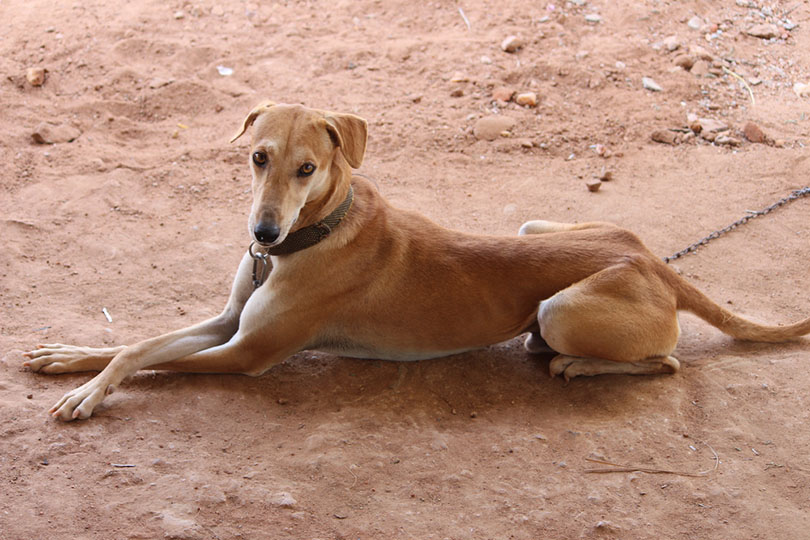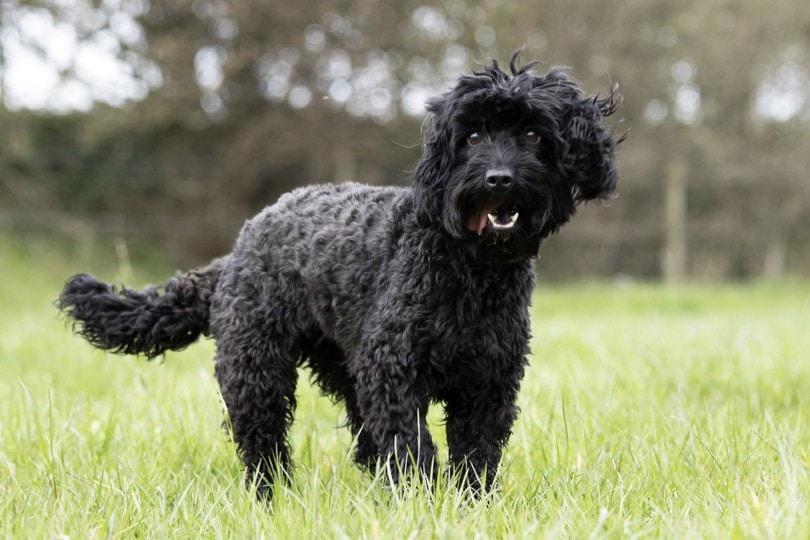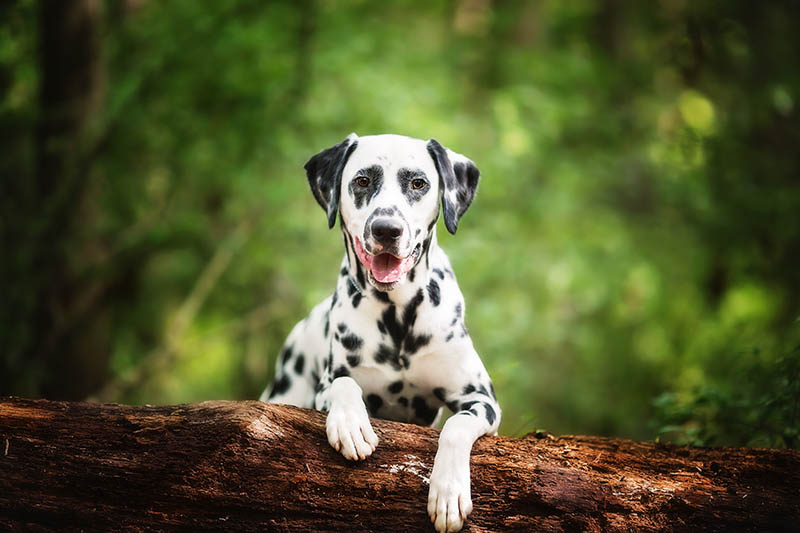Siberian Indian Dog (Siberian Husky & Native American Indian Dog): Info & Pictures

Updated on
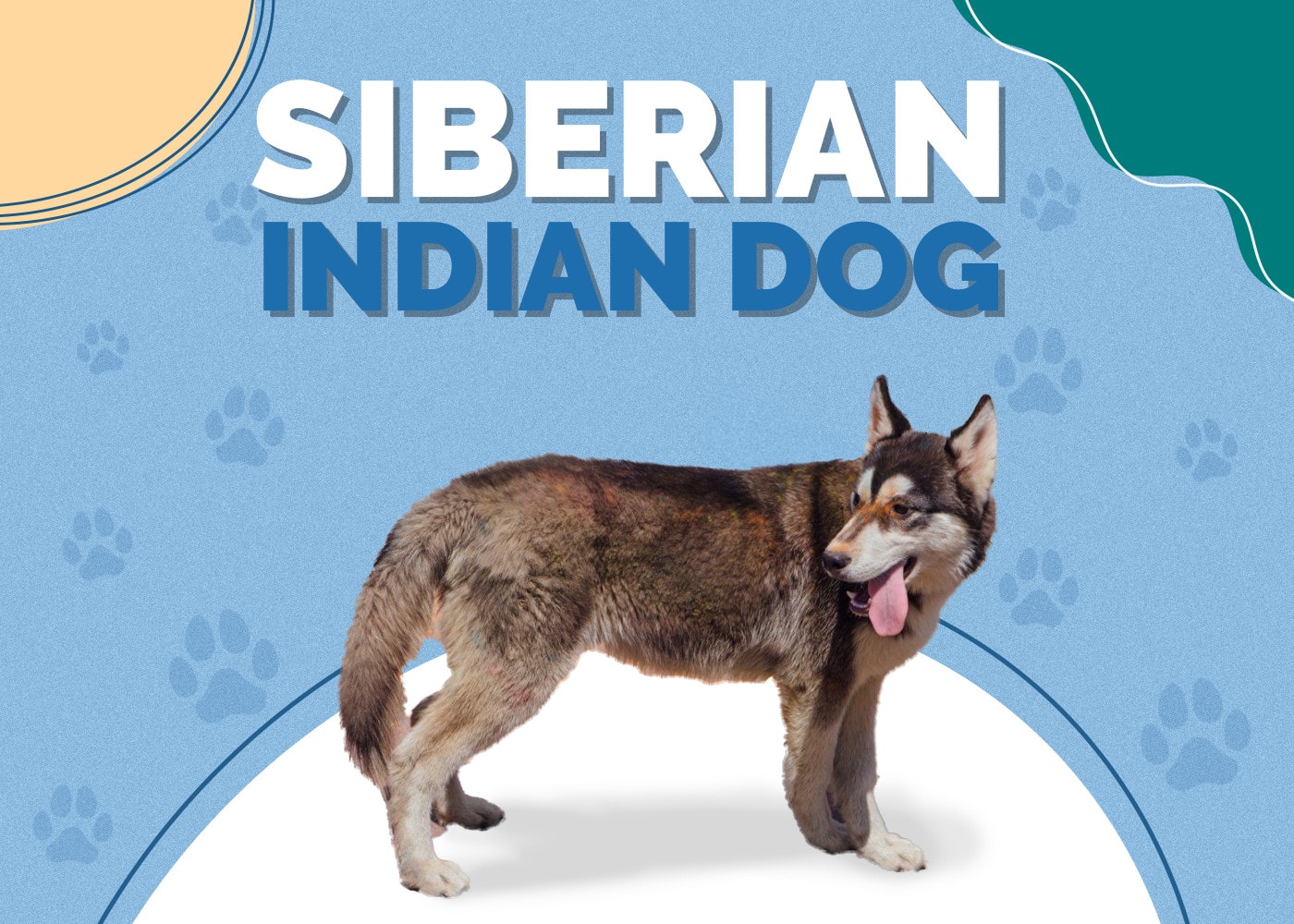
| Height: | 23 – 34 inches |
| Weight: | 50 – 100 pounds |
| Lifespan: | 12 – 15 years |
| Colors: | White, Orange, Red, Black, Yellow, Spotted, Blue, Brown |
| Suitable for: | Active families, Active couples |
| Temperament: | Intelligent, Loving & Loyal, Highly active, Happy |
Is that a wolf? Nope! It’s a Siberian Indian Dog! A designer dog breed that’s the result of crossing the fluffy, workaholic Siberian Husky with the rare Native American Indian Dog, the Siberian Indian Dog is a gorgeous, happy-go-lucky pup that is highly intelligent and always wants a job to do.
Available in a wide range of coat colors, patterns, and textures, this gentle-natured pooch is terrific with individuals, couples, and families alike. With a head-turning appearance that is bound to make your neighbors take notice, the Siberian Indian Dog is a great addition to nearly any household.
In this comprehensive guide, we will thoroughly go over every aspect of the Siberian Indian Dog and key items that you need to know before buying one, including puppy costs, their personality, as well as dietary and exercise needs.
Ready to learn about the Siberian Indian Dog? Let’s get right into it!
 Siberian Indian Dog Puppies
Siberian Indian Dog Puppies
Are you considering bringing a Siberian Indian Dog puppy home to your family? This fluffy and friendly designer dog is waiting to meet you and your loved ones today! However, before you go surfing the web to find a Siberian Indian Dog puppy at the most reasonable deal, you should take a few things into consideration.
With the rise in demand for designer dogs is an increase in puppy mills and backyard breeders. These facilities breed puppies with only monetary gain in mind, and typically do not have any regard for the health or happiness of the puppies or their parents.
Even though the puppy will come with an appealing cheap price tag, the long-term effects of purchasing a Siberian Indian Dog from a puppy mill or backyard breeder can affect the dog, and you, for the rest of their lives.
Some behavioral problems that a puppy mill dog can suffer from include difficulty with house training and constant trembling. Moreover, your Siberian Indian Dog puppy may suffer from some health problems if you purchased him from a puppy mill, such as shortened limbs, heartworm, or blindness. There are several other behavioral problems and health issues that can be a consequence to buying a Siberian Indian Dog puppy from a backyard breeder or puppy mill. The extremely reasonable price tag may seem too good to be true, trust us – it is. Always do your research.
To guarantee that you’re buying from a high-quality and reputable breeder, always do your research. Meet with the breeder and ask a lot of questions. You also want to make sure you are able to meet the puppy before adopting them, and the parent breeds if possible. A reputable breeder would be able to provide you with a full medical history so if that information is not available, you may be dealing with a puppy mill.
Before you answer the first online ad that you see selling Siberian Indian Dog puppies, take all of the aforementioned information into deep consideration.
3 Little-Known Facts About the Siberian Indian Dog
1. His Parent Breed Is Known by Many Names
The Native American Indian Dog is also known as the Dixie Dingo and the Carolina Dog.
2. He Comes from a Hard Working Lineage
Both the Siberian Indian Dog’s parent breeds are hard workers. The Native American Indian Dog was utilized by the Plains Indians to hunt, while the Siberian Husky was bred to pull the sleds of the Chukchi tribes over 3,000 years ago.
3. He May Have Blue Eyes
Thanks to his Siberian Husky parent breed, your Siberian Indian dog may come with icy blue eyes!
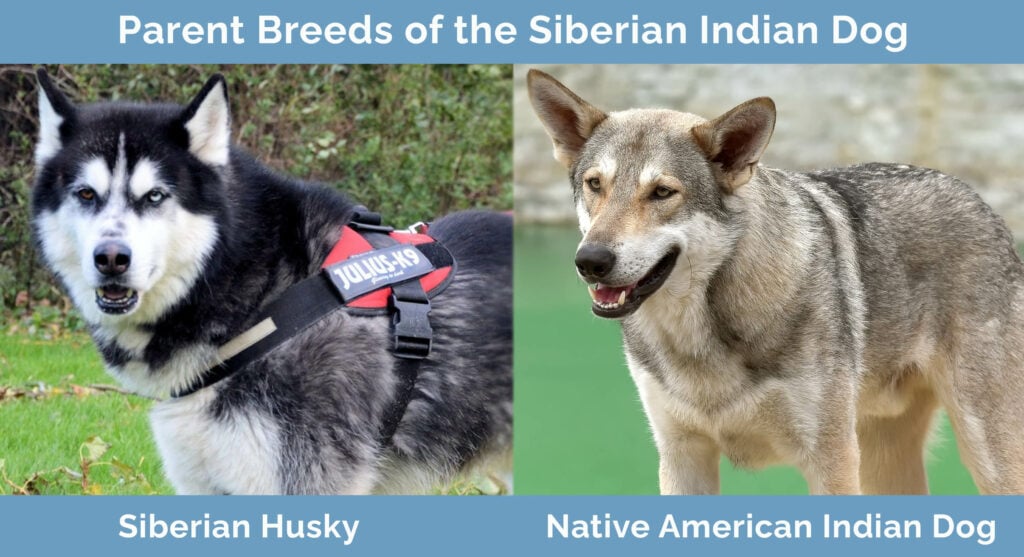
Temperament & Intelligence of the Siberian Indian Dog 🧠
In order to fully understand your new Siberian Indian Dog’s personality, it’s important to take a look at the temperament and intelligence of his parent breeds.
Siberian Huskies are active, smart, people-pleasing pups that thrive on attention and work. Since they are pack-oriented pooches, Siberian Huskies need an owner who is the clear “alpha.” This will make training time easier because the dog will respect you.
Huskies are high-energy, mischievous dogs with a very playful nature. As such, they need constant mental and physical stimulation in order to keep them from resorting to bad behavior.
The Native American Indian Dog is loyal, affectionate, loving, and protective of their families. However, due to their protective nature, these dogs can be aloof or shy around strangers if not properly socialized.
Your Siberian Indian Dog can inherit a combination or all of these personality traits.
Are Siberian Indian Dogs Good for Families? 🏡
You bet! Your Siberian Indian Dog is a loyal and loving designer dog that adores his human pack. However, due to his demand for daily exercise, this dog would be best suited for an active family with a big yard.
Do Siberian Indian Dogs Get Along with Other Pets? 🐶 😽
Yes. The Siberian Indian Dog does get along with other pets, including dogs and cats, if he is socialized with them from an early age.
 Things to Know When Owning a Siberian Indian Dog
Things to Know When Owning a Siberian Indian Dog
Now that you know all about your Siberian Indian Dog’s personality and smarts, let’s explore everything else you should know in order to provide this pup with a fulfilling life.
Food & Diet Requirements 🦴
Your Siberian Indian Dog is a large pup, and he will need to be fed accordingly. On average, you will need to feed him 3 to 4 cups of high-quality, grain-free, protein-packed kibble every day.
Exercise 🐕
Your Siberian Indian Dog is a livewire and needs at least 60 minutes of activity every day. This could include a romp in the yard, a couple of brisk jogs around the neighborhood, or just living it up with a game of tug in the living room.
We recommend walking your Siberian Indian Dog about 10 miles every week in order to adequately wear him out.
Training 🦮
Once he knows who is in charge, your Siberian Indian Dog will do anything to please the leader of the pack. This is why firm, consistent training with positive reinforcement from the get-go is so important.
Additionally, due to the Native American Indian Dog’s tendency to be extremely protective, you will need to properly socialize your Siberian Indian Dog puppy with people and other dogs from an early age.
Grooming ✂️
Your Siberian Indian Dog has an extremely thick coat. However, he is not a significant shedder. Every summer season, he will shed his undercoat in thick clumps. In order to keep his fur sleek and shiny, we recommend brushing him weekly with a slicker brush and comb. During his shedding months, use a de-shedder brush to get rid of all of the loose, dead hair.
Remember to clean his ears and clip his nails routinely.
Health Conditions ❤️
- Hip Dysplasia
- Cataracts
- Progressive Retinal Atrophy
- Corneal Dystrophy
While an overall healthy dog, the Siberian Indian Dog is known to suffer from some genetic disorders that he can inherit from his parent breeds. This is why finding a puppy from a responsible breeder is so crucial in order to be sure you’re getting a healthy dog.
 Male vs. Female
Male vs. Female
The last thing that you may wish to consider when shopping for a Siberian Indian Dog is if you want a boy or a girl. While males will be significantly bigger than females, by about 4 inches and 5 pounds, there really aren’t any distinct differences in the two sexes’ personalities.
 Final Thoughts: Siberian Indian Dog
Final Thoughts: Siberian Indian Dog
If you’re looking for a lively, intelligent, and loyal breed, the Siberian Indian Dog may be the ideal addition to your family. Just remember to always walk away from backyard breeders and puppy mills ads and instead, opt to buy from a reputable source.
Featured Photo Credit: Smile19, Shutterstock
 Siberian Indian Dog Puppies
Siberian Indian Dog Puppies Things to Know When Owning a Siberian Indian Dog
Things to Know When Owning a Siberian Indian Dog Male vs. Female
Male vs. Female Final Thoughts: Siberian Indian Dog
Final Thoughts: Siberian Indian Dog